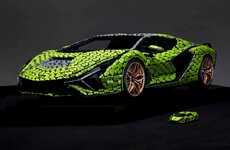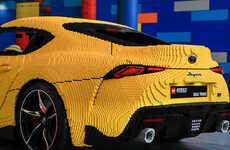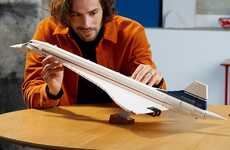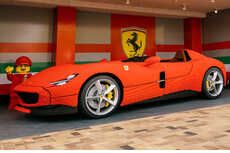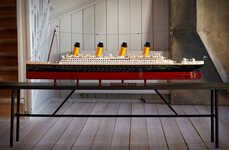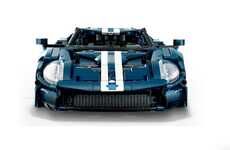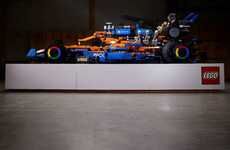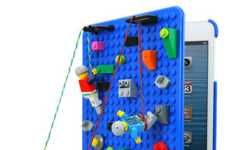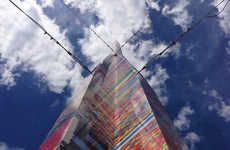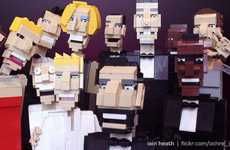
The Rolls-Royce Trent 1000 is Made from Blocks
Marina Rotharmel — July 22, 2012 — Art & Design
References: rolls-roycemotorcars & gizmodo
LEGO is not just a child’s game, as the Rolls-Royce Trent 1000 engine was recently debuted at the Farnborough International Airshow.
The model is only about half the size and weight of a real one, but nevertheless it’s still a very impressive structure. The project took about two months to create. The company used the actual blueprints of the real engine to make it as precise as possible.
According to GIZMODO it took 152,455 LEGO bricks, weighs about 677 pounds and is 6.56 feet long. This totally grand gray structure is apparently the only one in existence. The next step for this creative company is building a fully sized LEGO plane to place the engine in.
The model is only about half the size and weight of a real one, but nevertheless it’s still a very impressive structure. The project took about two months to create. The company used the actual blueprints of the real engine to make it as precise as possible.
According to GIZMODO it took 152,455 LEGO bricks, weighs about 677 pounds and is 6.56 feet long. This totally grand gray structure is apparently the only one in existence. The next step for this creative company is building a fully sized LEGO plane to place the engine in.
Trend Themes
1. LEGO Engineering - The use of LEGO blocks in creating precise mock-ups of products and structures to test for accuracy and functionality.
2. Interactive Prototyping - Creating interactive models using simulation technology to give a realistic experience of product testing and feedback.
3. 3D Printing - The use of 3D printing technology in creating mock-ups or production of equipment and prototypes, reducing the need for manual labor.
Industry Implications
1. Aircraft Manufacturing - Aircraft manufacturers can use LEGO-precision mock-ups to efficiently test and experiment with the design of new engines and other equipment.
2. Automotive Manufacturing - Automotive companies can use interactive prototyping to simulate and test new models before producing physical prototypes, reducing time and costs of development.
3. Construction and Architecture - Construction and architecture firms can use 3D printing to create model homes and structures to be used in testing and proof-of-concept demonstrations.
3.4
Score
Popularity
Activity
Freshness


